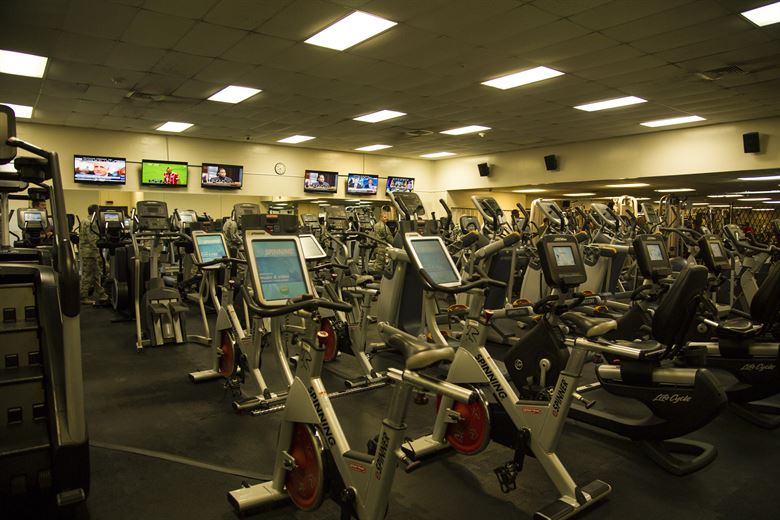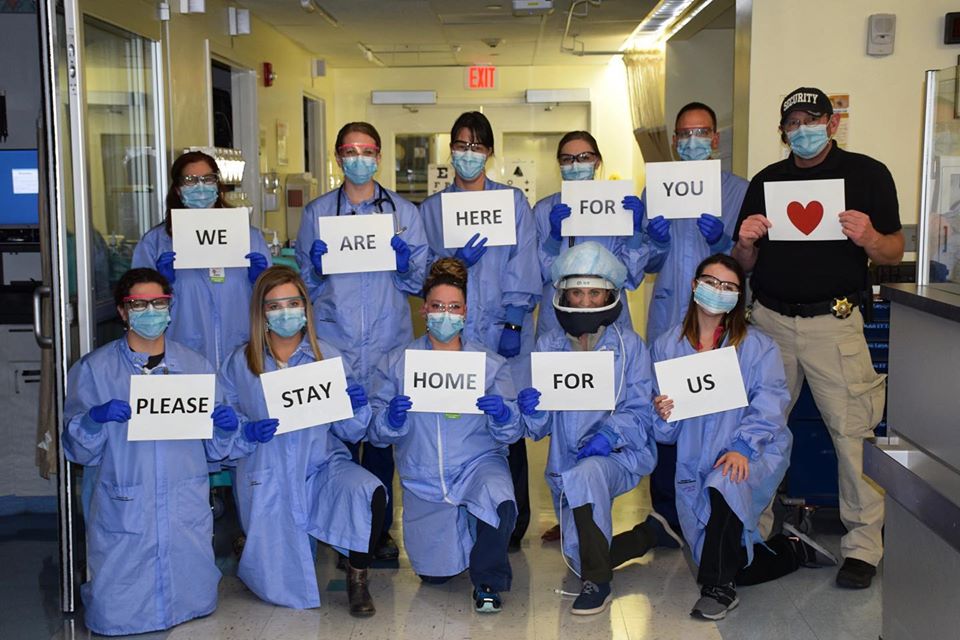Fitness-related organizations include but are not limited to gyms, fitness centers, personal training, dance studios, and martial arts centers.
Distancing and Occupancy:
Fitness-related organizations are required to:
• Limit the gathering capacity to a maximum of 250 people or the number of people, including staff, based on a determination of capacity (square footage/occupancy as specified below), whichever is less. Ensure compliance with the OHA Guidance for Gatherings.
• Limit fitness class size to maximum occupancy of the room (as long as it ensures six (6) feet of separation).
• Consider holding fitness activities or classes outdoors if it can be done safely, when it does not violate any local ordinances, and when participants and instructors can maintain six feet of physical distance. Limit exercise equipment stations to those located at least six (6) feet apart. If equipment cannot be moved to facilitate physical distancing, it must be blocked from being used.
• Prohibit contact sports that involve participants coming into bodily contact, close quarters (less than six (6) feet apart), or using shared equipment (e.g., basketball, squash, racquetball, taekwondo, karate, wrestling, mixed martial arts).
• Only allow gymnasiums to be used for non-contact sports or individual skills development not requiring contact with other people.
• For one-to-one personal training, maintain six (6) feet of physical distance between trainer and client. If close contact within six (6) feet is unavoidable, it is strongly recommended that the client wear a face covering and the time during which close contact occurs is minimized. Trainer and client should thoroughly wash hands with soap and warm water or use hand sanitizer (60-95% alcohol content) immediately before and after appointment.
Operations:
Fitness-related organizations are required to:
• Review and implement Mask and Face Covering Guidance for Business, Transit and the Public.
• Ensure all facilities and equipment are safe to operate and are in good condition after the extended closure. Maintenance and operations manuals and standard operating procedures should guide this work.
• Close water fountains, except for those designed to refill water bottles in a contact-free manner.
• Close showers for use. Locker room sinks and toilets may remain open for use but limit the number of people who use the facilities at any one time to ensure that a distance of six (6) feet can be maintained.
• Keep saunas, steam rooms and whirlpool spas closed.
• Keep pools closed to recreational swim activities, swimming lessons, and all other aquatic activities.
• Keep drop-in childcare closed.
• Refer to and apply Guidance for School Aged Summertime Day Camps for any children and youth programs.
• Post clear signs listing COVID-19 symptoms, asking employees and clients with symptoms to stay home, and listing who to contact if they need assistance.
• Use signs to encourage physical distancing throughout facility, including but not limited to reception areas, eating areas, locker rooms, and near popular equipment.
• Position staff to monitor physical distancing and disinfecting requirements.
• Ensure that ventilation systems operate properly. Increase air circulation as much as possible by opening windows and doors, using fans, or other methods. Do not open windows and doors if doing so poses a safety risk to employees, children, or customers.
• Establish one-way traffic flow, where possible, for equipment circuits, tracks, etc. Use signs to direct one-way flow of traffic.
• Provide handwashing stations or hand sanitizer (60-95% alcohol content) throughout the facility for use by employees and clients.
• Refer to Restaurant Sector Guidance for information about food handling and distribution as applicable to each fitness facility.
• Review and implement General Employer Guidance.
To the extent possible, fitness-related organizations should, but are not required to:
• Encourage clients to wear cloth, paper, or disposable face coverings.
• Consider placing clear plastic or glass barriers in front of reception counters, or in other places where maintaining six (6) feet of physical distance between employees and clients is more difficult.
• Consider having gym time by appointment to limit number of people in the facility.
Encourage use during non-peak times as determined and publicized by facility management.
• Consider offering virtual fitness classes, especially for persons at higher risk for severe COVID-19 complications such as people over 60 or with underlying medical conditions.
• Encourage one-way flow with marked entrances and exits, but do not block egress for fire exits. Use signs to direct one-way flow of traffic.
• Strongly encourage clients to bring their own filled water bottles with them to the facility.
Cleaning and Disinfection:
Fitness-related organizations are required to:
• Thoroughly clean all areas of fitness-related organization prior to reopening after extended closure.
• Use disinfectants that are included on the Environmental Protection Agency (EPA) approved list1 for the SARS-CoV-2 virus that causes COVID-19. No product will be labeled for COVID-19 yet, but many will have human coronavirus efficacy either on the label or available on their website.
• Require employees or facility guests to wipe down all equipment (e.g., balls, weights, machines, etc.) immediately before and after each use with a disinfectant provided by the gym that is included on the EPA-approved products for the SARS-CoV-2 virus that causes COVID-19. A solution of 70%-95% alcohol content also works.
• Frequently clean and disinfect work areas, high-traffic areas, and commonly touched surfaces in areas accessed by workers and public.
• Thoroughly clean restrooms at least twice daily and ensure adequate sanitary supplies (e.g., soap, toilet paper, 60-95% alcohol content hand sanitizer) throughout the day.
To the extent possible, fitness-related organizations should, but are not required to:
• Strongly encourage clients to wash hands with soap and water for 20 seconds and/or use hand sanitizer (60-95% alcohol content) immediately before and after gym session as well as several times during the session.
• Flush water pipes weekly while the building is vacant and prior to resuming normal building use. Stagnant water in pipes can create conditions that favor the growth and spread of Legionella and other harmful bacteria (see Guidance for Reopening Building Water Systems after Prolonged Shutdown).
Client Screening:
Fitness-related organizations are required to:
• Record client contact information, date and time for client facility use. If there is a positive COVID-19 case associated with the facility, public health officials may need the business to provide this information for a contact tracing investigation. Unless otherwise required, this information may be destroyed after 60 days from the session date.
To the extent possible, fitness-related organizations should, but are not required to:
• Screen clients prior to start of their session in the facility such as asking:
Have you had a new or worsening cough?
Have you had a fever?
Have you had shortness of breath?
Have you been in close contact with anyone with these symptoms or anyone who has been diagnosed with COVID-19 in the past 14 days?
If the client responds “yes” to any of the screening questions, ask them to return home and wait to return to the facility until all symptoms, including fever have been resolved for at least 72 hours without medication, or at least 14 days after contact with a person with a cough, fever, or diagnosed with COVID-19.
• Strongly encourage a client exhibiting symptoms of illness to immediately leave the facility and not return until at least 72 hours after symptoms have resolved without medication.
• Strongly encourage clients at higher risk for severe COVID-19 complications (persons over age 60 or with underlying medical conditions) to continue to stay home to reduce their risk of exposure.
Specific Guidance for Fitness-related Organizations

Categories:
